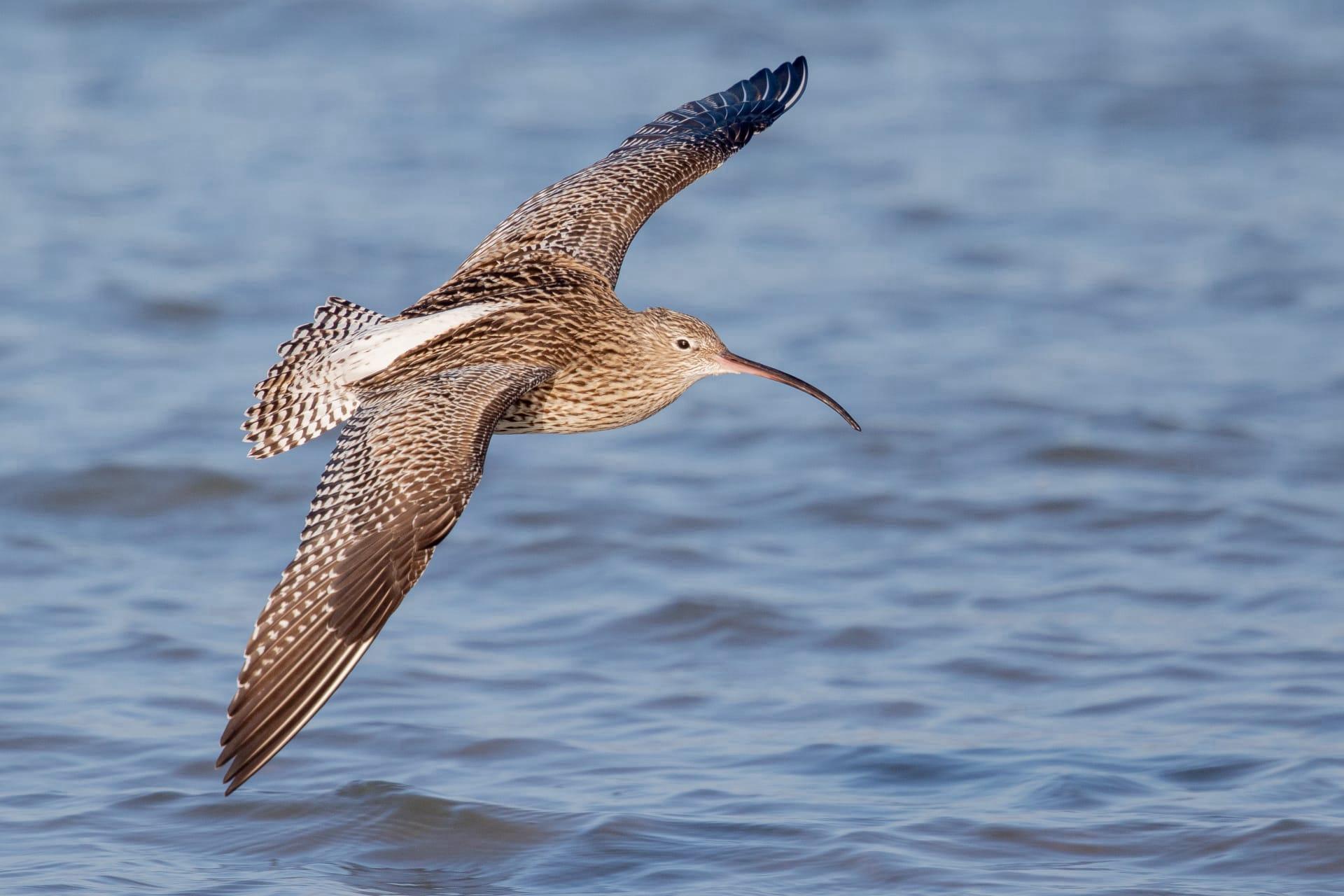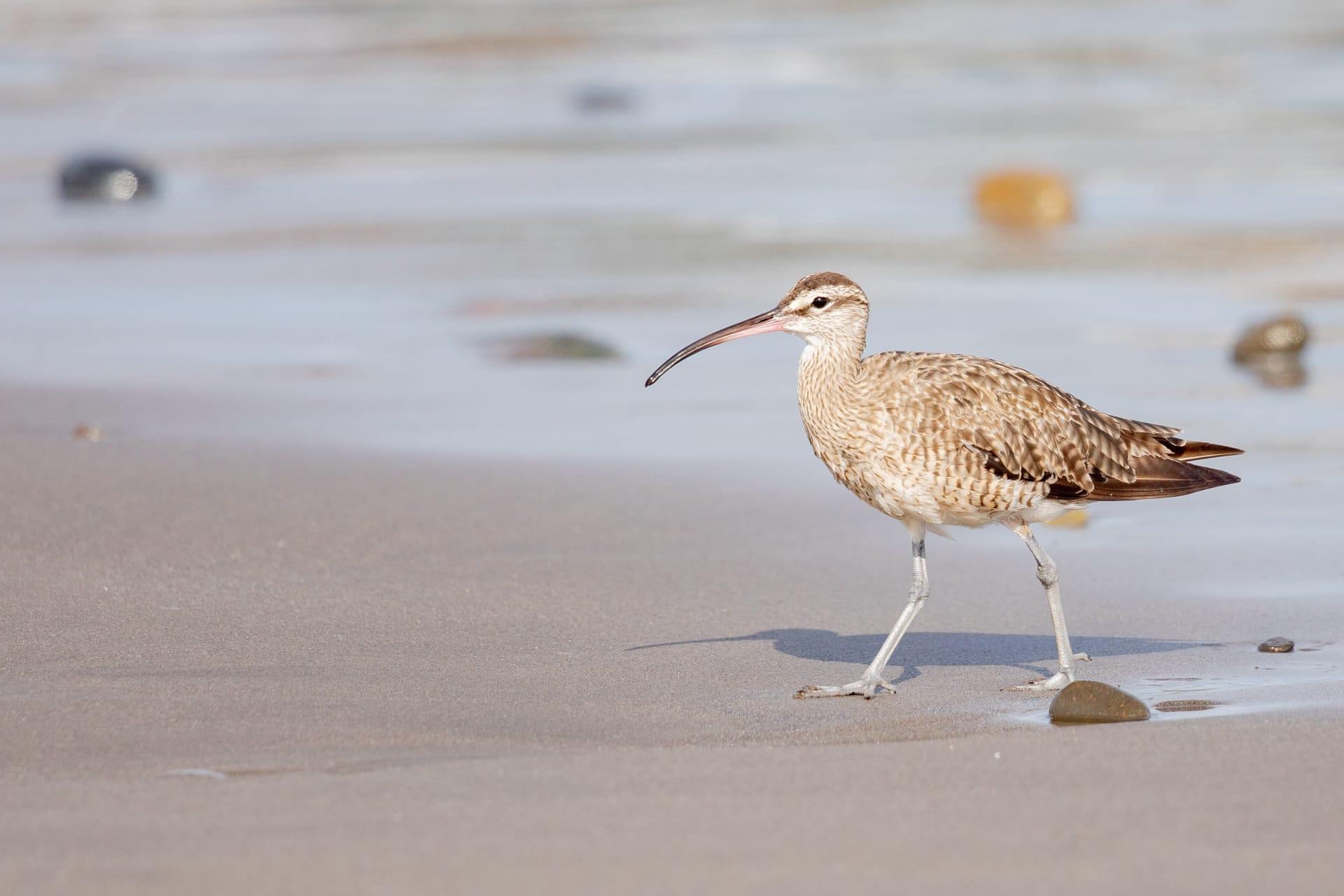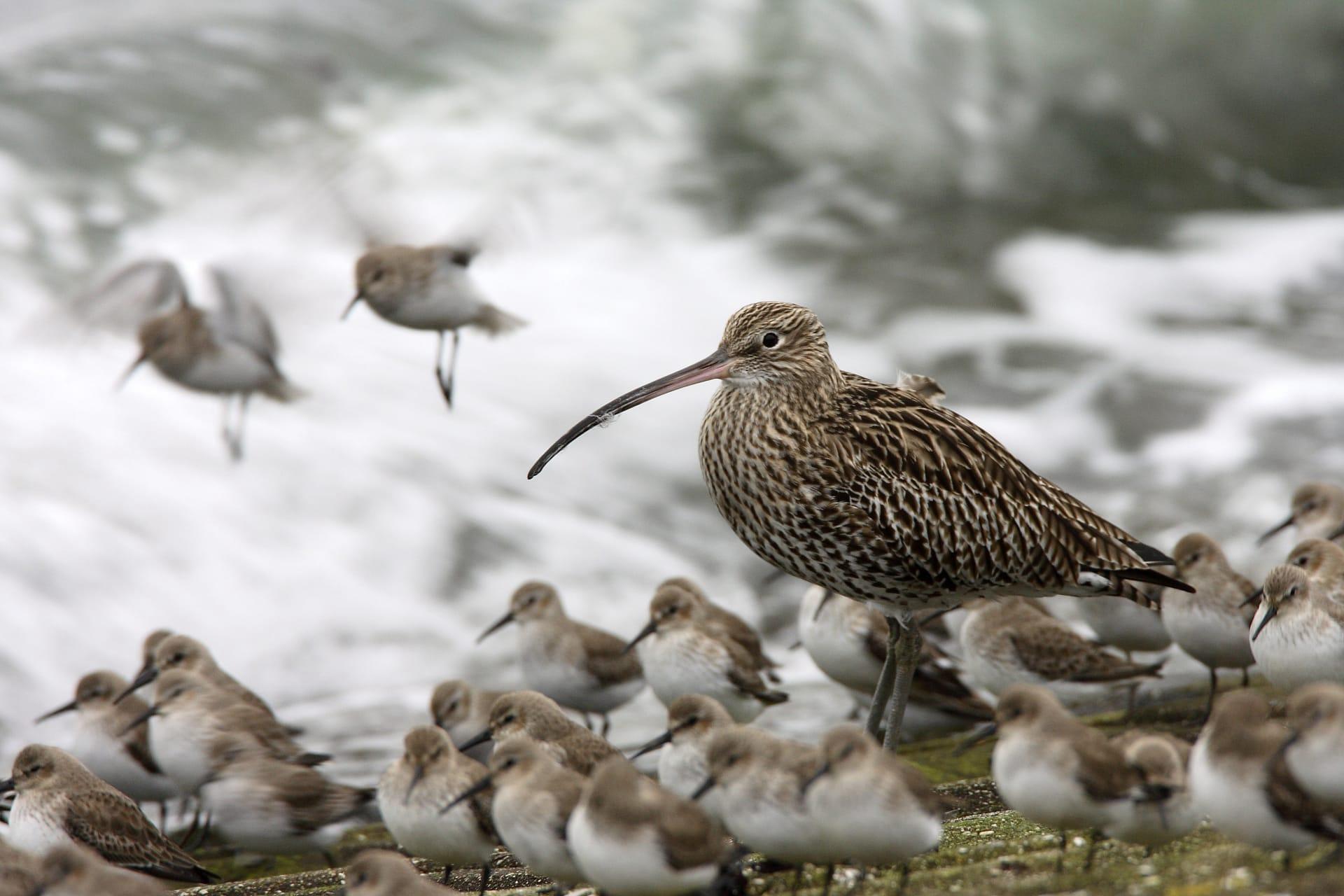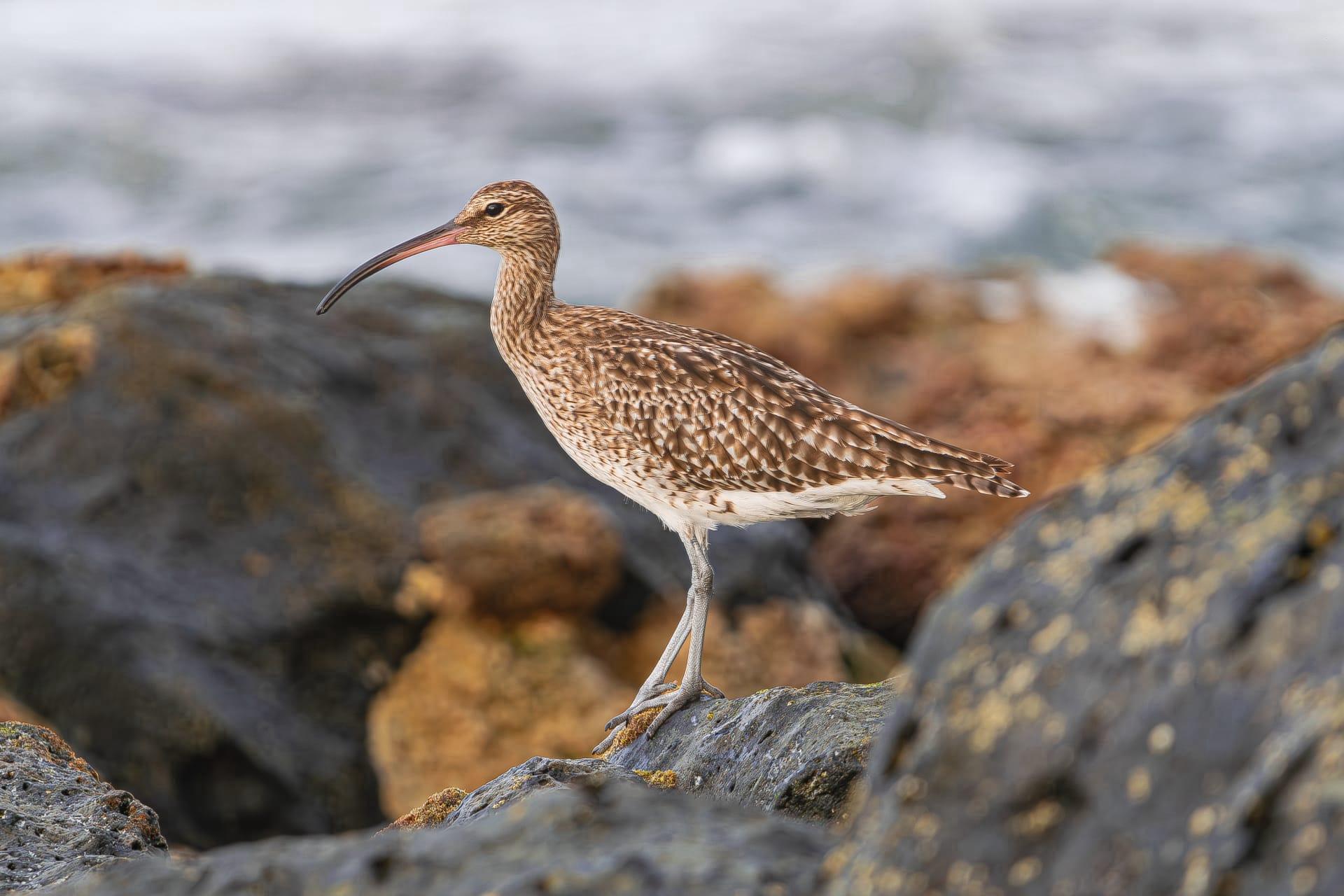1
Did you know that the curlew, a wading bird found across the globe, is famous for its impressively long, downward-curving bill? The Eurasian Curlew, for instance, boasts a bill that can reach up to 8.3 inches (21 cm) in length, accounting for a third of its body length. This unique bill isn't just for show; it's a specialized tool for hunting. Curlews use it to probe deep into mud and sand, snatching up worms, shellfish, and other buried delicacies. It's like having a built-in fishing rod!
Another fascinating fact about curlews is their migratory behavior. They are long-distance champions, with some species, like the Whimbrel, undertaking epic journeys. These birds can fly up to 4,000 miles (6,437 kilometers) non-stop over the Atlantic Ocean during migration. They're built for endurance, utilizing tailwinds and weather patterns to make these long trips more efficient. It's a testament to their resilience and adaptability in the wild.

2
Curlews have a distinct and evocative call, often described as a mournful "cur-lee" sound, which is actually where their name originates. This call is more than just a communication tool; it's an integral part of their identity. In some cultures, the curlew's call is associated with folklore and is believed to signify impending bad weather or even carry spiritual messages. In the stillness of their natural habitats, the curlew's call can resonate far and wide, creating an unforgettable auditory experience for anyone lucky enough to hear it.
But it's not just their call that's noteworthy. Curlews exhibit remarkable nesting habits. Unlike many birds that opt for trees or cliffs, curlews prefer ground nesting in open country. Their nests are simple depressions in the ground, camouflaged and often located in marshes, grasslands, or tundra. This ground-level approach, while risky due to predators, reflects their adaptation to wide-open spaces where trees and elevated nesting spots are scarce.

3
When it comes to parenting, curlews are exemplary. Both parents are involved in raising the chicks, which is not always common in the bird world. The female curlew typically lays 3 to 4 eggs, and both parents take turns incubating them for about a month. Once hatched, the chicks are precocial, meaning they are relatively mature and mobile from the moment of birth. However, they still rely on their parents for protection and guidance as they learn to navigate their environment.
Another intriguing aspect of curlews is their diet. They have a varied and opportunistic feeding strategy. While their long bills are perfect for probing mud and sand for invertebrates, they are also known to eat small fish, berries, and even small reptiles and amphibians. Their diet changes depending on the season and what's available, showcasing their ability to adapt to different ecological niches. This dietary flexibility is key to their survival in the diverse habitats they occupy.

4
The curlew's role in ecosystem health is significant. As they forage, they aerate the soil, which benefits the environment. This aeration process not only helps other species of invertebrates and plants but also contributes to the overall health of the ecosystem. Think of them as the gardeners of their habitats, playing a crucial role in maintaining the balance of the ecosystems they inhabit.
Did you know that curlews are also cultural icons? In various parts of the world, they have inspired poets, artists, and musicians. The curlew's unique appearance and haunting call have made it a symbol of the wilderness and a source of artistic inspiration. In some regions, they are even the subjects of local festivals and celebrations, highlighting the deep connection between humans and these fascinating birds.

5
Curlews are not just ground-dwellers; they are also skilled in flight. They have a distinctive, undulating flight pattern, which includes a series of rapid wingbeats followed by a short glide. This flight style is not just about getting from point A to B; it's also a defensive tactic against predators. The unpredictable pattern makes it harder for predators to track them in the air, showcasing their agility and intelligence.
Curlews have a unique adaptation in their eyes. They possess a high number of rod cells, which are sensitive to low light. This adaptation allows them to see well in the dark, giving them an advantage during twilight or nighttime. It's particularly useful for spotting predators or foraging in low-light conditions. This night vision capability is a testament to their adaptability and survival skills in various environments.